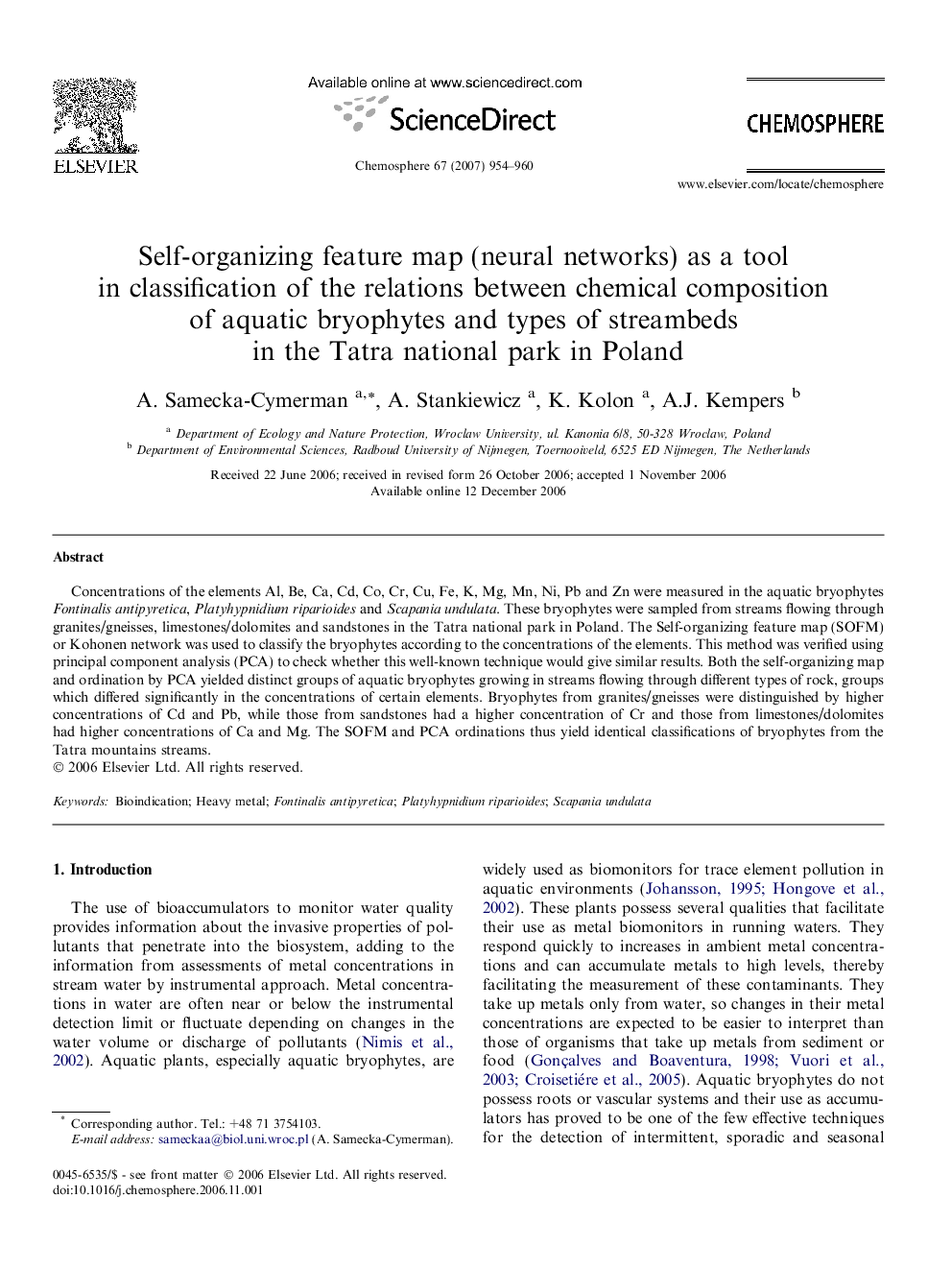| کد مقاله | کد نشریه | سال انتشار | مقاله انگلیسی | نسخه تمام متن |
|---|---|---|---|---|
| 4415533 | 1307750 | 2007 | 7 صفحه PDF | دانلود رایگان |

Concentrations of the elements Al, Be, Ca, Cd, Co, Cr, Cu, Fe, K, Mg, Mn, Ni, Pb and Zn were measured in the aquatic bryophytes Fontinalis antipyretica, Platyhypnidium riparioides and Scapania undulata. These bryophytes were sampled from streams flowing through granites/gneisses, limestones/dolomites and sandstones in the Tatra national park in Poland. The Self-organizing feature map (SOFM) or Kohonen network was used to classify the bryophytes according to the concentrations of the elements. This method was verified using principal component analysis (PCA) to check whether this well-known technique would give similar results. Both the self-organizing map and ordination by PCA yielded distinct groups of aquatic bryophytes growing in streams flowing through different types of rock, groups which differed significantly in the concentrations of certain elements. Bryophytes from granites/gneisses were distinguished by higher concentrations of Cd and Pb, while those from sandstones had a higher concentration of Cr and those from limestones/dolomites had higher concentrations of Ca and Mg. The SOFM and PCA ordinations thus yield identical classifications of bryophytes from the Tatra mountains streams.
Journal: Chemosphere - Volume 67, Issue 5, March 2007, Pages 954–960